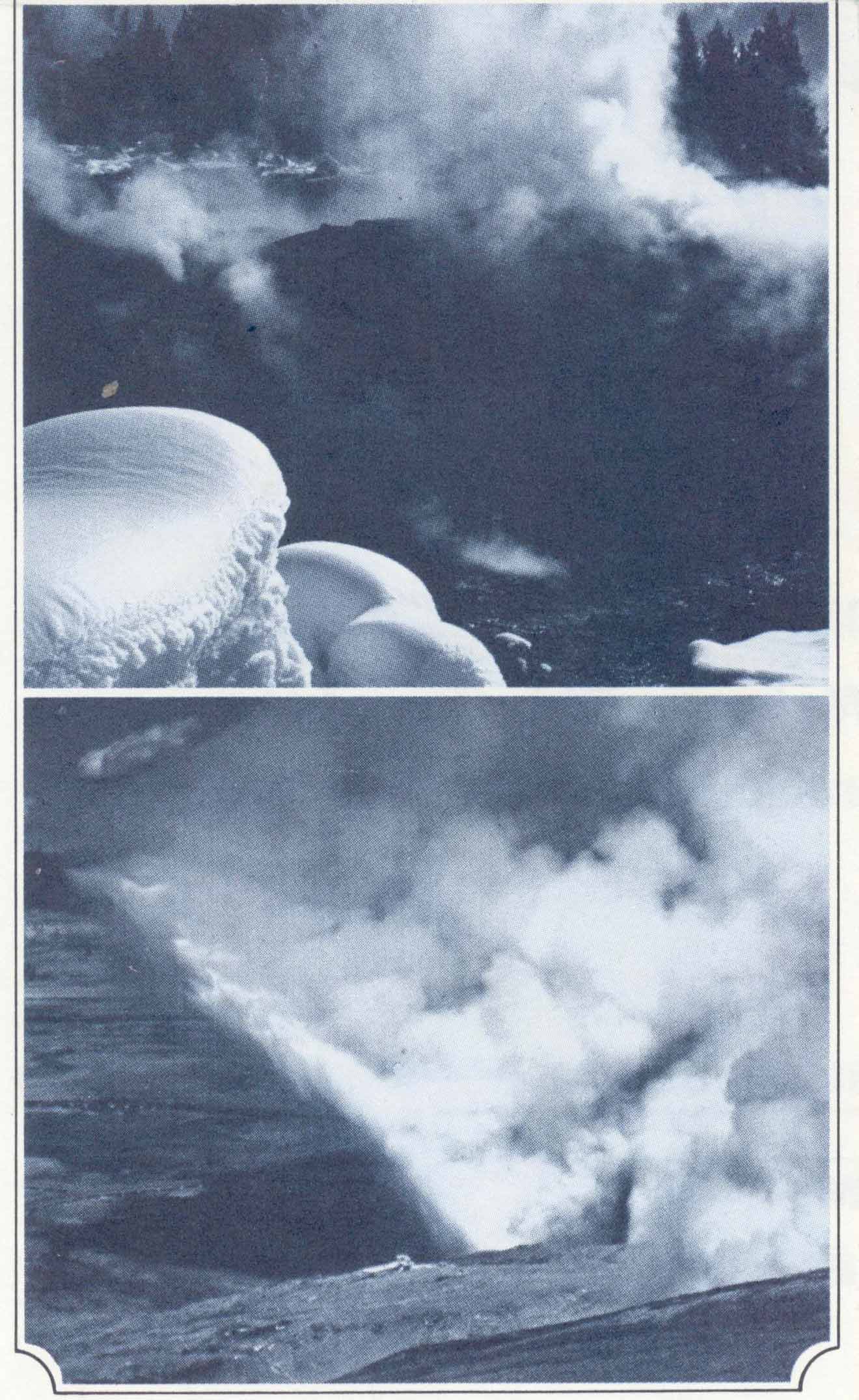
GUIDE TO THE
NORRIS GEYSER BASIN
15¢

NORRIS GEYSER BASIN
The Norris Geyser Basin was named forPhiletus W. Norris who served as Yellowstone’ssecond superintendent from 1877until 1882. Although he did not discoverit, his explorations and reports werelargely responsible for calling attentionto that area.
Norris is considered to be the hottestand most active geyser basin in Yellowstone.Here geysers and hot springs exhibitgreater change in activity over ashort span of time than elsewhere in thepark. It is not unusual for a new hotspring to come into existence literallyovernight. The new feature may last forjust a few days or perhaps a month orso; upon occasion some have enduredfor many years.
Because of constant change in the thermalfeatures, the ground here is unstable andhazardous in many locations. Therefore,you are required to stay on designatedtrails and boardwalks at all times. Thisnot only protects you from possibleserious burns but also helps preserve thefeatures as well. Remember also not tothrow any objects into thermal features.Debris of any kind in a hot spring or geysercould clog the vent and destroy the feature.Because many scalding hot poolsand run-off channels are near trails andboardwalks, pets are not permitted onthe trails.
The fact that thermal features change maycome as a surprise, but remember thatgeysers, hot springs and other thermalphenomena are subject to natural stressesjust like plant and animal communities.Of course the changes in thermal activityresult from a different set of factors thanthose affecting plants and animals. Canyou guess what they might be?
Shifts in the earth’s crust (earthquakes)result in movements along cracks and fissuresin the ground. These tremors usuallycause changes in the underground “plumbingsystems” of thermal features, thus alteringactivity patterns. Look for signs ofrecent activity variations as you walkalong the trails, or ask a naturalist if therehave been some recent changes.
As you explore, look closely at the oftenintricate formations around the edges ofa few hot pools, geysers and in somethermal runoff channels. You will noticea mineral called sinter or geyserite (a formof silicon dioxide, SiO₂) being depositedlike tiny spines. These rather prickly formationsresult when geyserite is depositedfrom slightly acid water, a characteristicof most thermal water in the Norris area.This is in contrast to the bead-like structuresthat result when geyserite forms fromslightly alkaline water found in thermalfeatures in the Old Faithful area.
Notice too the variety of colors stainingthe basins. The refraction (breaking up) oflight, mineral deposits and living organisms,algae and bacteria, all add their hues.The assortment of colors reflects variationsin water temperature and chemistry.
As you enjoy your walk remember thatNorris is a great natural preserve wherenature is constantly at work designing andredesigning one of its most unusual displays.We are only visitors here and mustnot spoil it in any way. It also serves as agreat natural research laboratory wherescientists from all over the world learnmore about geothermal energy. Help uspreserve this uniqu